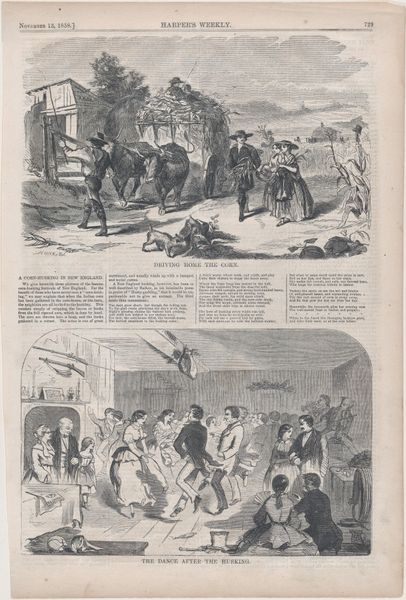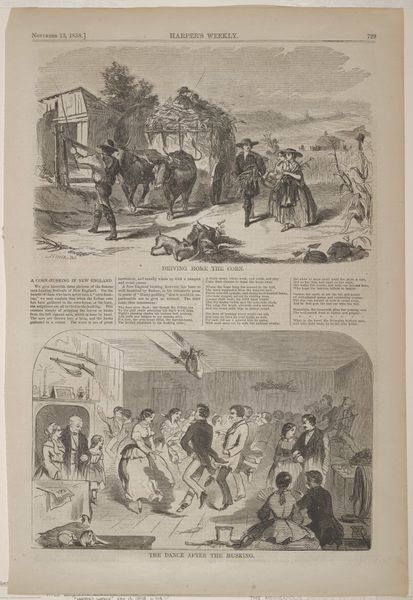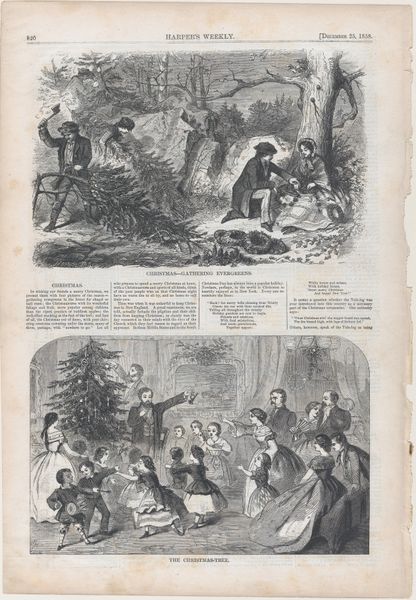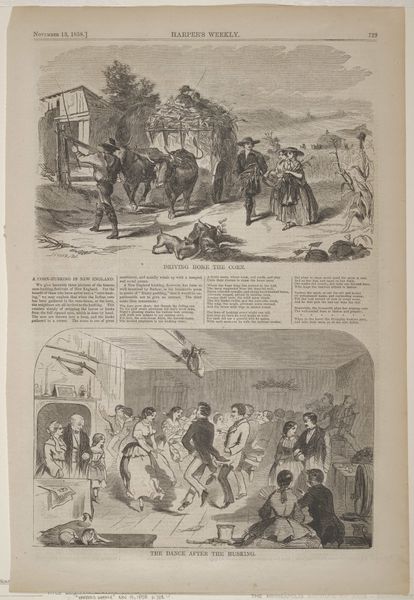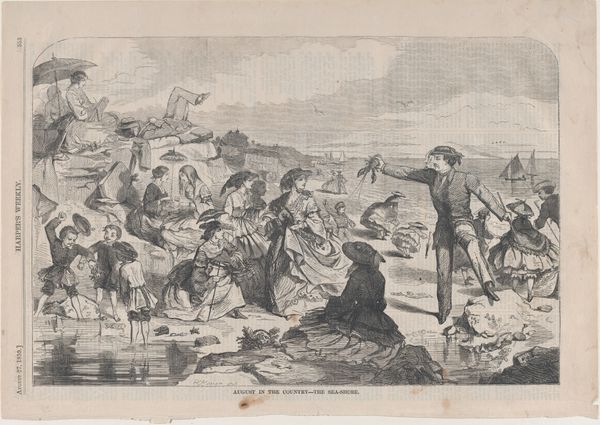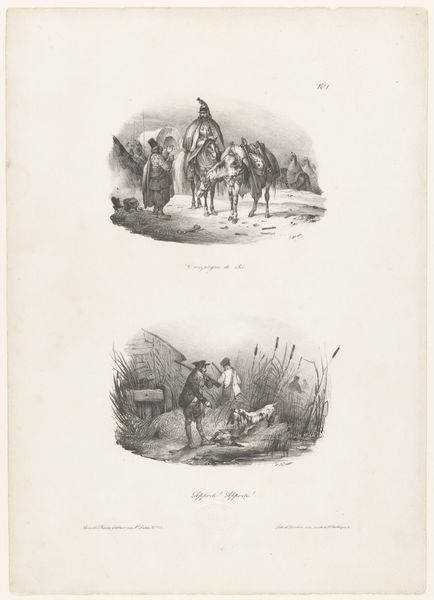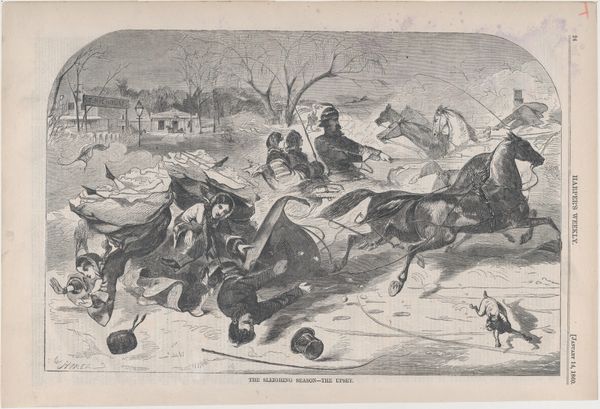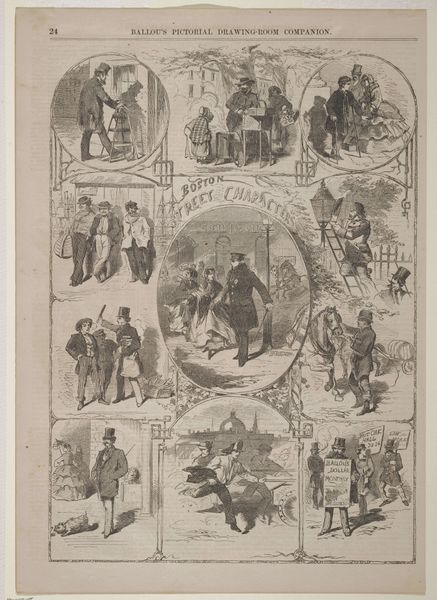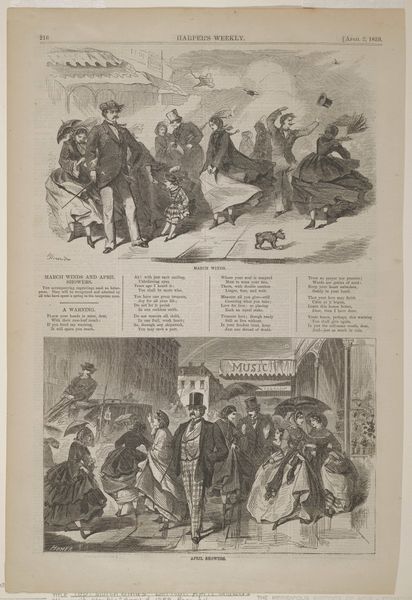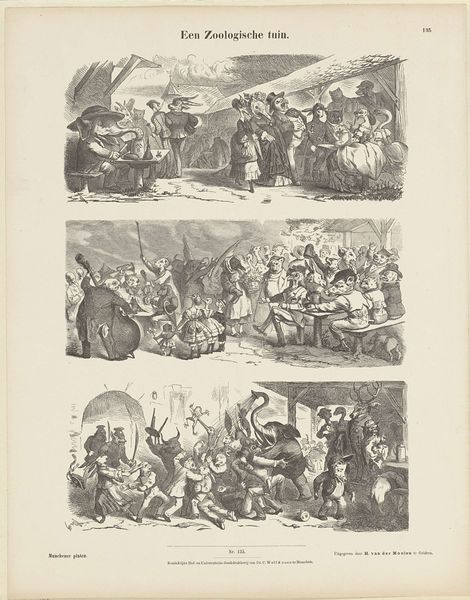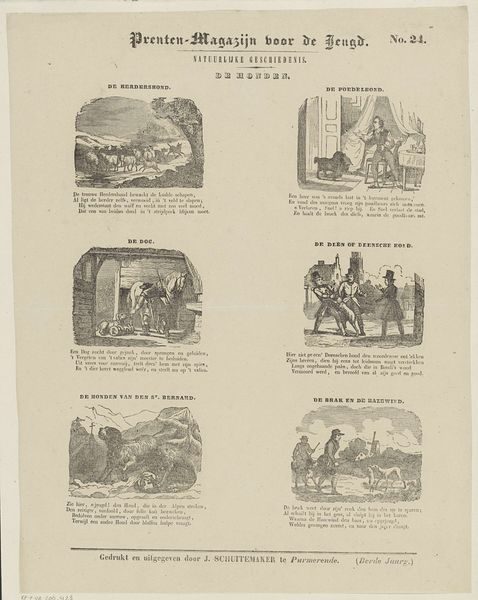
Thanksgiving Day – Ways and Means (from "Harper's Weekly," Vol. II) 1858
0:00
0:00
drawing, print
#
drawing
#
imaginative character sketch
#
toned paper
#
light pencil work
# print
#
pencil sketch
#
dog
#
house
#
personal sketchbook
#
men
#
sketchbook drawing
#
watercolour illustration
#
cartoon carciture
#
sketchbook art
#
watercolor
#
arm
Dimensions: image: 6 7/8 x 9 1/4 in. (17.5 x 23.5 cm) sheet: 16 x 11 1/4 in. (40.6 x 28.5 cm)
Copyright: Public Domain
Editor: This print, "Thanksgiving Day – Ways and Means" by Winslow Homer, appeared in Harper's Weekly in 1858. It's fascinating! The contrast between the chaotic energy of the upper scene and the more formal arrival depicted below really strikes me. What stands out to you? Curator: It’s important to recognize that illustrations like these played a crucial role in shaping national identity. Think about how the romanticized depictions of Thanksgiving in publications like Harper's Weekly glossed over the complexities of early American history and the brutal displacement of Indigenous peoples. What ideologies are being subtly promoted through such imagery, and whose perspectives are notably absent? Editor: That's a powerful point. I hadn't considered how selective the imagery is. What do you make of the division of labor depicted – does it suggest anything about gender roles? Curator: Absolutely. We can examine how traditional gender roles are reinforced here – men transporting the harvest and hunting turkeys, while women and children await their arrival at the "old home". Who has access to mobility and action, and who is relegated to the domestic sphere? Editor: It's interesting to analyze this as a commentary on societal roles and expectations, not just a quaint depiction of Thanksgiving. Curator: Indeed. Images such as this contributed to the construction of an American Thanksgiving mythos, conveniently overlooking the uncomfortable realities of class divisions and racial inequality prevalent at the time. It encourages us to reflect critically on the narratives we tell ourselves as a nation and who gets to participate in them. Editor: I see this print in a new light now. Thanks for helping me think more critically about its historical context. Curator: The pleasure is mine. Visual culture is a powerful tool; learning to decode its messages is essential.
Comments
No comments
Be the first to comment and join the conversation on the ultimate creative platform.

